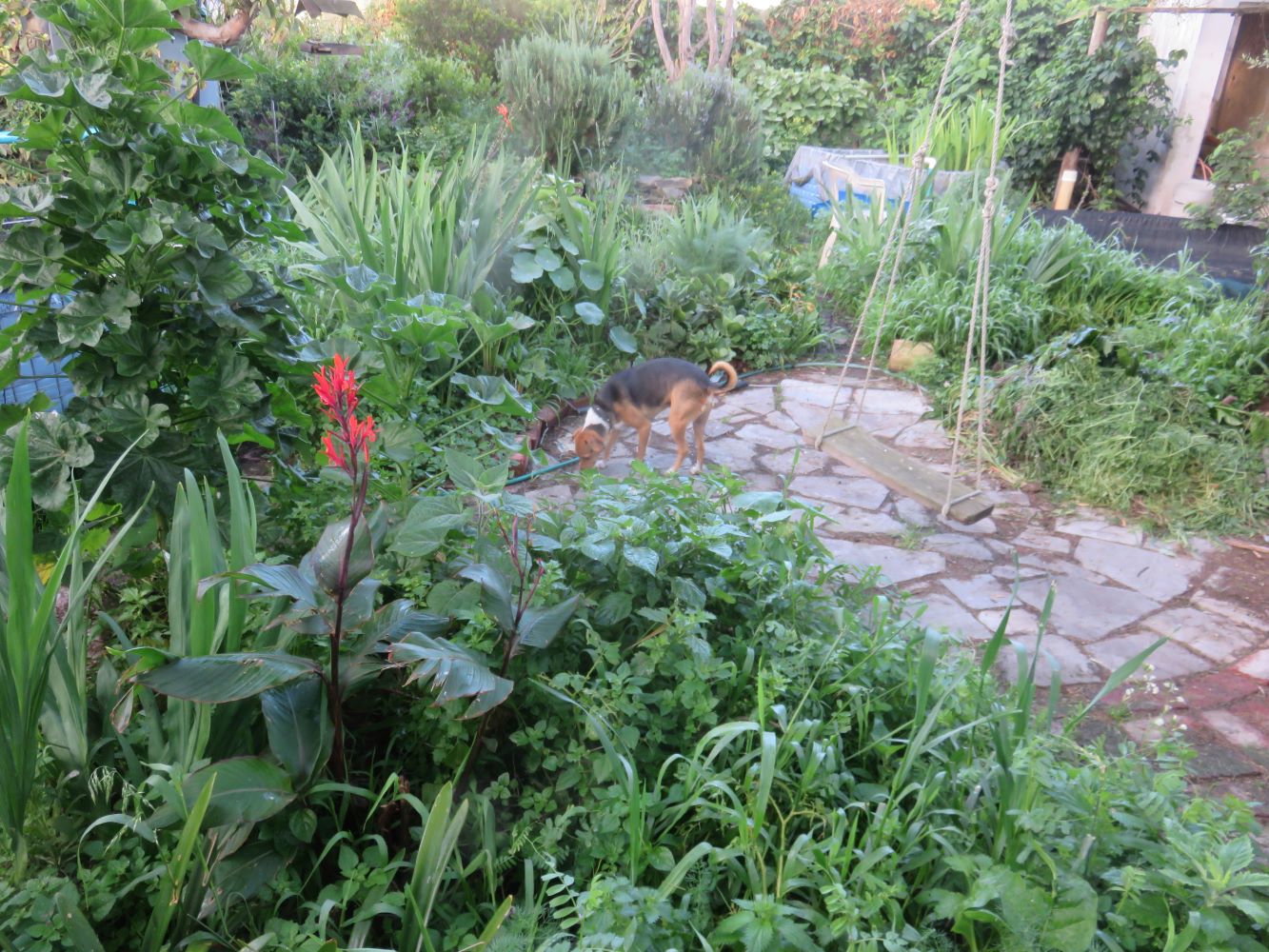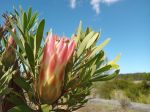Dear Reader, in this age of AI created content, please support with your goodwill someone who works harder to provide the human-made. Sign up in the righthand column or bottom of this page. You will receive my hand illustrated monthly newsletter RESTORE NATURE and access to the biodiversity garden design course as I write...and nothing else, I respect your time.
Speculating on animal plant relationships, stink bugs and birds
 Animal plant relationships in these gorgeously patterned stink bugs gorging on a tree-malva
Animal plant relationships in these gorgeously patterned stink bugs gorging on a tree-malvaA few mornings ago animal plant relationships took a front seat in my garden observations. I have been struggling to find a platform where you can record and get ID's for interactions that could help gardeners make better plant choices, rather than just a single species record of either a plant or an insect. The struggle motivated me to create a Whatsapp group for posting animal-plant interaction records. Feel free to join and post wherever you are: its called Zoobot.
So back to the morning in question. I was peacefully drinking my coffee in the garden when... I put on my reading glasses and realized that the black stains on the toilet paper bush, or tree-malva, were not darkening bark. The tree was covered with stinkbugs, large button sized ones with gorgeous Victorian wallpaper type patterns.
Now stinkbugs are sap sucking insects belonging to the Hemiptera, and thereby hangs a tale in my region of the globe.
Animal plant relationships: the community activist, ecologist and gardener Doug Tallamy
Recently I was excited to discover Doug Tallamy’s videos on biodiversity in his garden and region of north America. He advocates many basic principles one could use. He also frequently advocates planting that will support caterpillars (this article with video is a good example) as they are the largest converters of plant to animal energy in the ecosystem. Caterpillars are chewers, often of the leaves of large trees. They occur in such great numbers that they form the caloric foundation of the whole terrestrial food web, and are especially important to nesting birds.
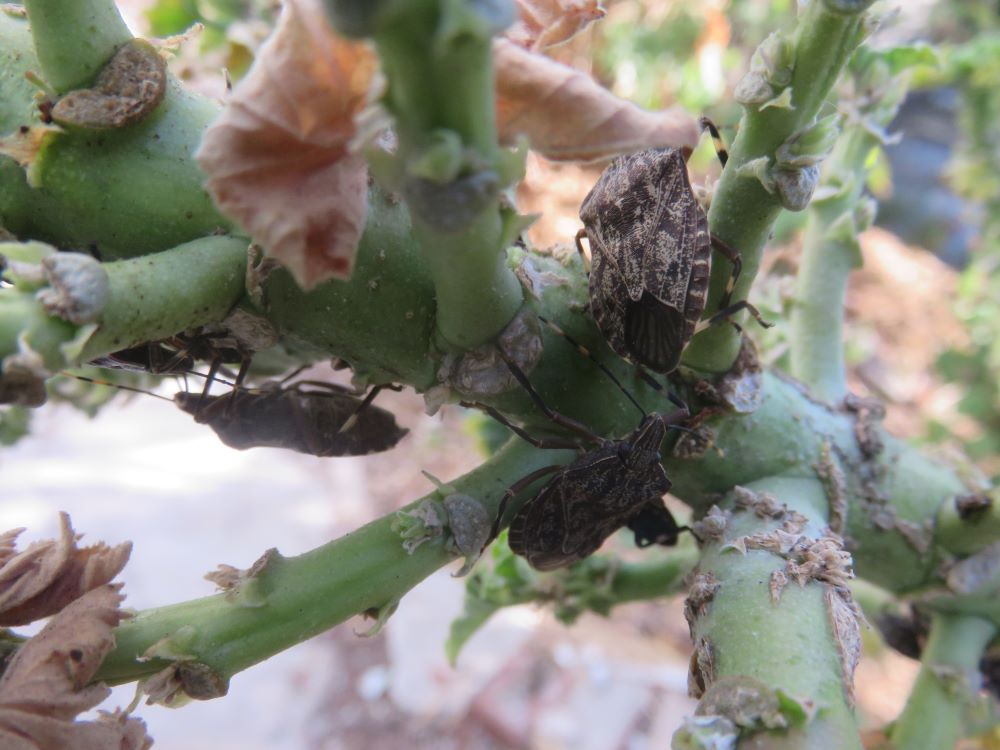
Fresh thoughts on what is causing bird population decline
Tallamy claims that the global loss of birds is due to the loss of caterpillars, and that is due to the loss of the caterpillar’s host plants. I assume from this that habitat loss would be driving the great extinction of insects and birds even if poisoning with biocides was not a factor.
Tallamy brought astounding diversity back to a ‘used up’ 10 acre piece of farmland. Starting with grass pasture he grew a forest, focusing on introducing keystone species. He explains these as plant species which are vital to a particular (and protection worthy) animal’s life cycle, like milk weed to the Monarch butterfly, or species which support the greatest number of animals in an ecosystem and whose absence causes an ecological implosion or diversity loss. Here oaks are one of his favorites.
Tallamy believes private land owners are more important for biodiversity than nature reserves. If land owners planted native plants, they could reverse the trend of falling bird and insect numbers. The extent of privately owned land and gardens in north America is vast, and greater than many of their wilderness areas combined. In the private gardens and farms massive tracts of lawn are introduced, the ‘bush’ is ‘clear cut’ and instead of diversity-supporting indigenous plants, exotics are planted, creating a zoological desert. It sounds just like South Africa, so its probably a global problem.
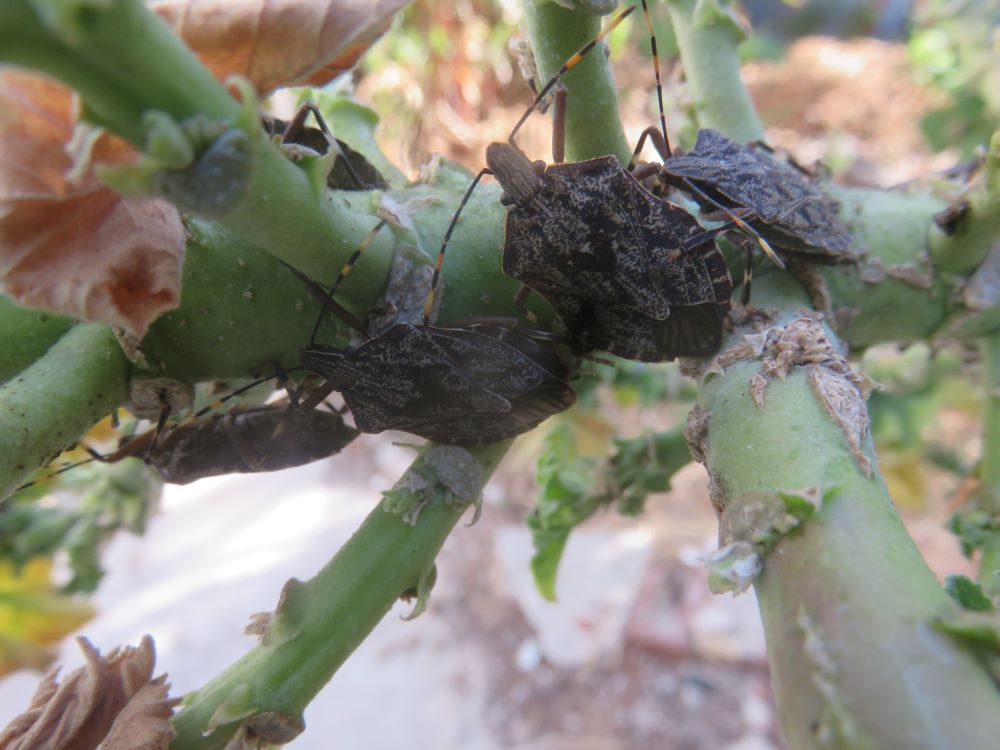 Studying stink bugs up close, they seem to return the analytical gaze !
Studying stink bugs up close, they seem to return the analytical gaze !A study on animal plant relationships in the South African context
This brings us back the the South African context, and the ridiculous floristic diversity of our region of the Cape Fynbos Biome.
In my reading on biodiversity I stumbled on an article, a study done by the University of Stellenbosch on insect diversity and plant diversity correlations. Within this article and its statistics on insects I began to understand that this is not north America ! This means perhaps that pursuing the multiplication of caterpillars in the garden is less relevant. Its apparently known that the fynbos is low in butterfly diversity anyway.
In all of the four biomes studied (Fynbos, Nama-Karoo, subtropical thicket and grassland) the insects which predominated were similar and they weren’t caterpillars but leaf beetles, weevils, parasitic wasps and stink bugs, in that order. Diptera (flies etc) and Orthoptera (locusts etc) came in next, lagging far behind in numbers. It may have been some kind of sampling error due to their means of collecting the insects, which is called ‘sweeping’. Insects which fly fast or are under the soil wouldn’t land up in the nets.
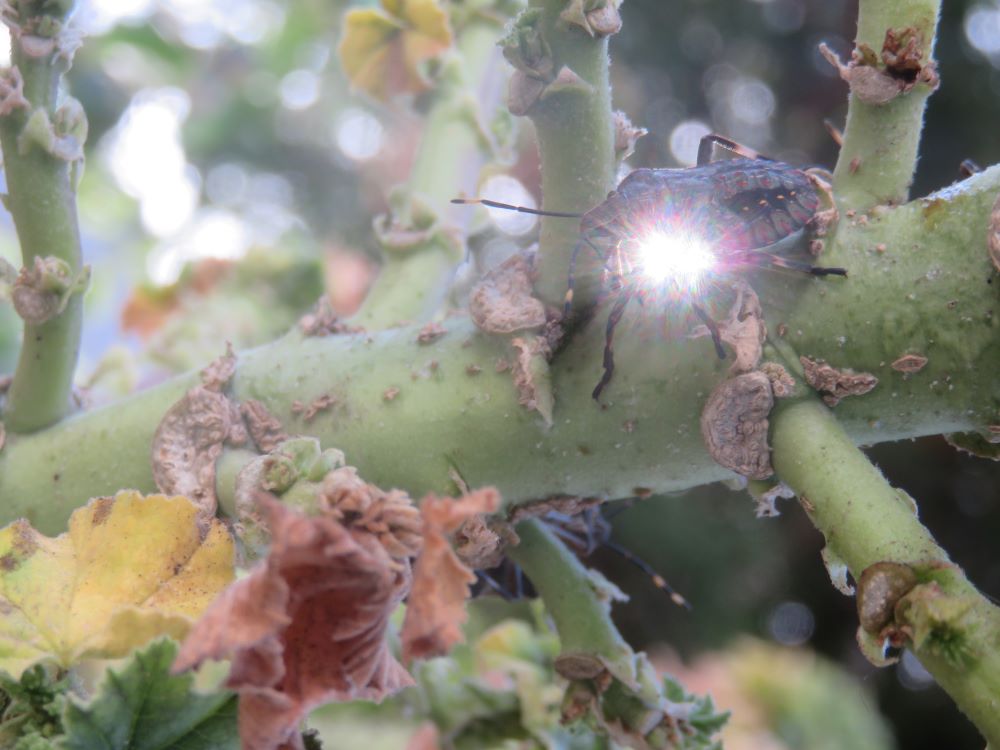 Can stink bugs shed some light ?
Can stink bugs shed some light ?An AHA moment, or jumping to conclusions ?
My own speculation is
that these insects in our indigenous vegetation show adaption to
eating hard-leaved plants stuffed with secondary metabolite chemicals
due to our bright sunlight. They are not the kind that feed on soft
green spring foliage. I wonder if amongst all of these, the best food
for a young baby bird would not be a stink-bug, large enough for a
meal, but without a beetle’s hard carapace or a wasp’s sting.
Is this exotic tree malva giving mother birds a convenient opportunity which could be as good a source of soft calories as would be the seasonal, soft leaf devouring, soft bodied caterpillar found in Tallamy’s environment. Is the stink bug our caterpillar ?
You will not find
answers on the net. Nonetheless I rejoice at the fat lazy stinkbugs
sucking my plants till the stems turn brown and curl up, and in turn feeding fledglings in my garden. Apparently there are even edible stink bugs
collected to the point of extinction by humans !
So don’t reach for the spray ! Give thanks and pray ! Stinkbugs are highly likely to be a gift to the wildlife friendly garden.
sitemap
home page for links to loads of other articles on wildlife friendly and regenerative gardening
the 'garden for life' blog
Restore Nature Newsletter
I've been writing for four years now and I would love to hear from you
Please let me know if you have any questions, comments or stories to share on gardening, permaculture, regenerative agriculture, food forests, natural gardening, do nothing gardening, observations about pests and diseases, foraging, dealing with and using weeds constructively, composting and going offgrid.
Your second block of text...
SEARCH
Order the Kindle E-book for the SPECIAL PRICE of only
Prices valid till 30.09.2023
Recent Articles
-
garden for life is a blog about saving the earth one garden at a time
Apr 18, 25 01:18 PM
The garden for life blog has short articles on gardening for biodiversity with native plants and regenerating soil for climate amelioration and nutritious food -
Cape Flats Sand Fynbos, Cape Town's most endangered native vegetation!
Apr 18, 25 10:36 AM
Cape Flats Sand Fynbos, a vegetation type found in the super diverse Cape Fynbos region is threatened by Cape Town's urban development and invasive alien plants -
Geography Research Task
Jan 31, 25 11:37 PM
To whom it may concern My name is Tanyaradzwa Madziwa and I am a matric student at Springfield Convent School. As part of our geography syllabus for this
"How to start a profitable worm business on a shoestring budget
Order a printed copy from "Amazon" at the SPECIAL PRICE of only
or a digital version from the "Kindle" store at the SPECIAL PRICE of only
Prices valid till 30.09.2023

